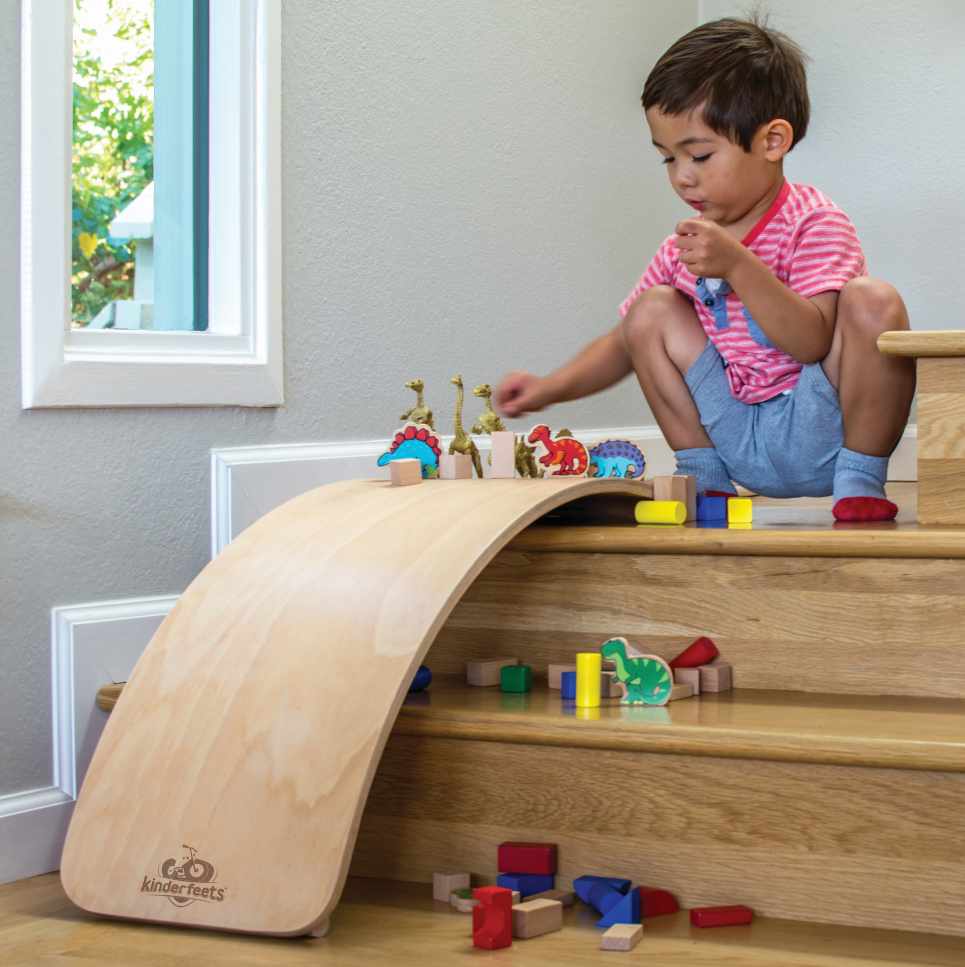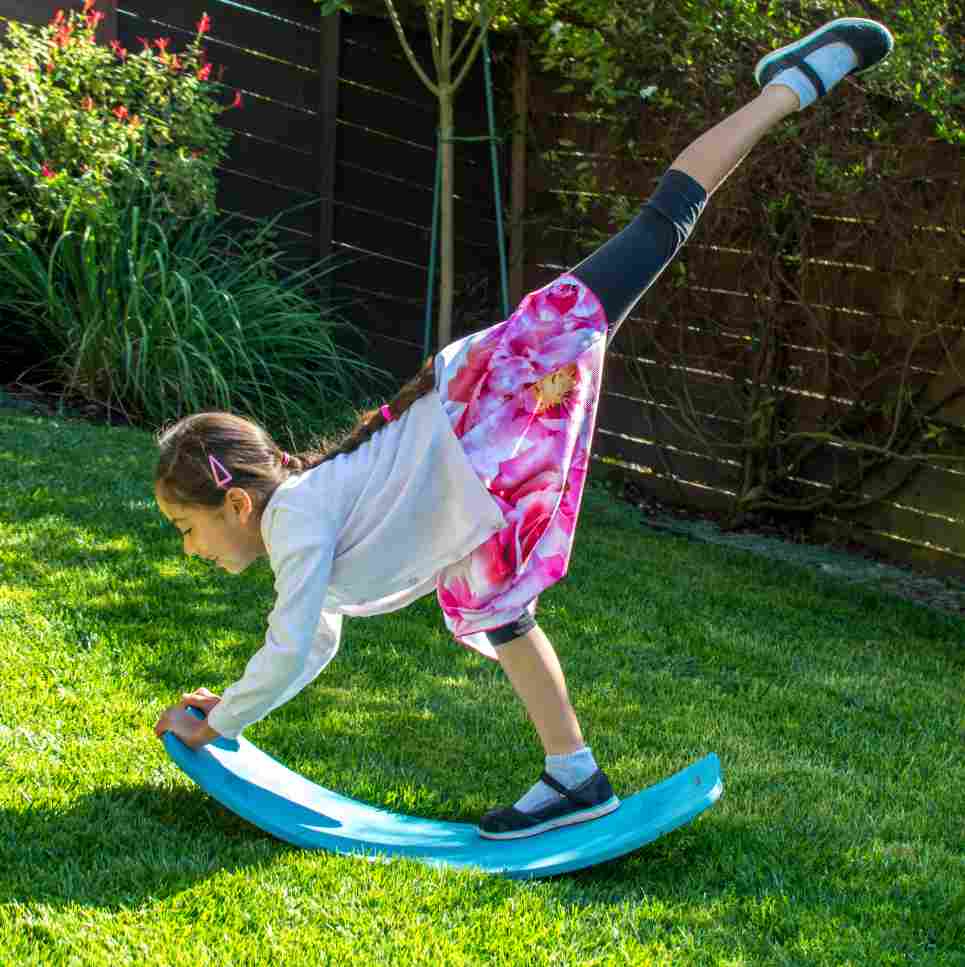Kinderboard Facts & Myths


Myths & misunderstandings
Kinderboards look deceptively simple. Developed for use in Waldorf early childhood classrooms they're a rather clever concept for developing a child's balance, stimulating their vestibular system and helping them gain a deeper awareness of their body and body parts.
However, as is often the case with popular products, there are a few myths and misunderstandings about this award-winning board.
Here's what you really need to know (and what product reviewers often get wrong).
Made from European beech wood
Kinderboards are made from FSC-certified beech wood sourced from Germany.
This is the same quality timber found in rival European products. European Beech is a heavier and denser timber than cheaper options like birch or pine. In other words, beech is both strong and durable and thus safely supports plenty of energetic play. Untraceable, non-sustainably harvested alternatives are cheaper for a reason.
Designed and crafted with care
A Kinderboard's design reflects the founding principles of the Waldorf (Steiner) educational model. This includes the use of sensory elements to encourage or stimulate exploratory activities.
In support of this principle, the surface on a Kinderboard has been carefully, and intentionally, designed to ensure a subtle sense of its original wood grain remains in the finished product. In other words, a Kinderboards tactile surface is never a result of inferior quality.
Contrast this with the mirror polished surface of rival products. While aesthetically pleasing, smooth surfaces are a potential safety hazard for younger children. We’re all familiar with the experience of slipping or losing our footing on an exceptionally smooth surface. In other words, the wood grain sensation on a Kinderboard doubles as an enhanced safety feature.
Thicker isn't always better
The Kinderboard has been tested and certified for a higher weight limit than rival products.
Most of a plywood product's strength comes from the cross-hatching pattern and thickness of individual layers used in its construction rather than its overall thickness. In other words, a thicker board isn't necessarily stronger. A Kinderboard's certified weight of 220 kgs makes it ideal for use by children and adults of all ages.
More creative play opportunities
Applying a felt layer would reduce a Kinderboard's utility.
Kinderfeets believes that the use of felt and cork on rival products undermines the founding principles of the Waldorf (Steiner) educational philosophy. For example, a felt surface would make it harder to use a Kinderboard creatively as a slide or a ramp. This would also limit its use outdoors or on a porch or balcony without additional care and attention.
An ethically made product
Kinderboards are made in an ethically run factory that Kinderfeets inspects and evaluates regularly.
In an increasingly competitive labour market the Kinderfeets factory considers staff welfare a key differentiator for attracting skilled workers. As a result, its staff are paid a living wage, receive home-cooked meals (they even get ice-cream treats in Summer) and are granted annual leave in accordance with local labour laws.
Furthermore, just as you'll see in a European factory, manufacturing dust and debris is actively ducted away from work stations and centrally collected for safe disposal. Similarly, paint fumes are vented and filtered from the factory floor. The layout of the Kinderfeets factory also allows plenty of natural light to flood its interior thus reducing the need for artifical lighting.
The carbon footprint involved in making a Kinderboard in Asia is similar to that of a product made in Europe. The timber in a European board is typically harvested and transported across national borders to a finishing factory elsewhere. The final product is then shipped to Australia from the opposite side of the planet.
Timber for a Kinderboard is harvested in Europe, transfered to a port and shipped to Asia (the Kinderfeets factory is located less than 10kms from its local port). Once finished, Kinderboards are shipped regionally to Australia; often directly to Brisbane (where Artiwood's warehouse is located) rather than Australian ports thousands of kilometres further south.
Accurate age grading
Kinderboards are tested and certified to the mandatory Australian safety standard for toys suitable for children under three years.
This means they're actually certified as safe for children from the age of birth. However, Kinderfeets believes that the recommended age of a product should not only reflect its test certification but also the age at which its features are of genuine value.
The Kinderboard is a creative play toy designed to spark the imagination and promote the development of gross motor skills. As a result, children under the age of 18 months are unlikely to gain the full benefit of this product. However, a Kinderboard is perfectly safe to use from birth under adult supervision.
Geninue value for money
Kinderfeets isn't a corporate giant focused on enriching its shareholders. It's an entrepreneurial family business. Its owner and founder, Oscar Mulder, is a hard-working Dutch migrant living in the USA. He's the great-grandson of a talented Dutch bike designer. Like his forebearer he's committed to designing and creating durable, quality products.
However, despite a Kinderboard's complex and often expensive manufacturing process, Kinderfeets Kinderboards are up to 25% cheaper than competitive products available in Australia.



